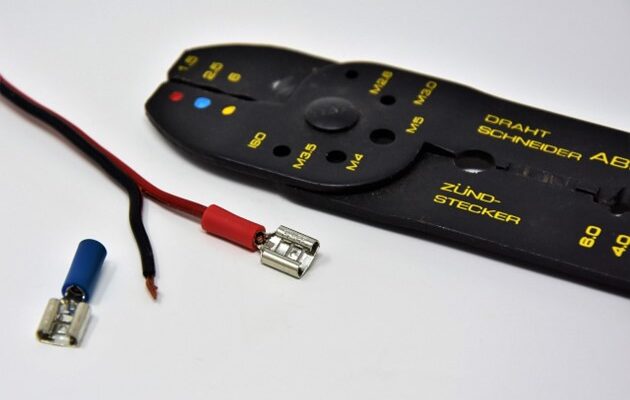Which one is right for the job?
Frequent vehicle breakdowns can cause costly downtime and negatively affect your brand. One way to prevent this is to ensure your fleet’s electrical parts are sturdy. That’s where crimping tools come in.
With an automotive crimp set from suppliers like RS, you can ensure your car or truck connections are durable. But what type of crimping tool should you opt for? First, let’s explore the different types.
Manual Crimping Tools
Manual crimping tools can be found in pretty much every onboard toolbox. One of the reasons they are popular is because they are easy to use. This makes them ideal for DIYers trying to make quick fixes.
But not all manual crimping tools are created equal. When shopping for these devices, you’ll find a couple of styles, ranging from basic hand crimpers, ratcheting crimpers, and lever action crimpers.
As the name suggests, basic crimpers rely solely on your hand squeeze, which makes them unsuitable for heavy-duty wires. Ratcheting crimpers have a built-in ratcheting mechanism that ensures even pressure and prevents under or over-crimping. In other words, they give you consistent crimps with less hand strain.
If you’re dealing with thicker wires, lever-action crimpers can come in handy. These have extended handles to provide extra leverage, reducing the effort you need to apply.
Battery-Powered Crimping Tools
Battery-powered crimpers are designed for efficient and consistent crimping without the need for manual force. They’re cordless and motorised devices, giving fleet technicians power and mobility in one tool.
Since they don’t require physical exertion, they allow you to work in tight spaces. In addition, they are also suitable for working in remote locations where you may not have access to a compressor or power outlet. Most come with rechargeable lithium-ion batteries, allowing you to use them for extended periods.
While battery-powered crimpers may not match the raw power of hydraulic models, their flexibility makes them a favorite for on-the-go repairs.
Hydraulic Crimping Tools
Hydraulic crimpers use lever-actuated oil-filled cylinders, giving you tremendous pressure with minimal effort. They are designed for working on large wiring systems or thick cables.
When choosing a hydraulic crimper, pay attention to the force they can apply. This is usually indicated in tons per square inch and ranges from 8 to 16. Like hand-held crimpers, hydraulic crimping tools also come with interchangeable crimping dies. This makes them suitable for a wide range of terminals and applications.
You need to be careful with maintenance when it comes to hydraulic crimpers. For instance, you need to make sure the oil is changed frequently. On top of that, you should purge any air that gets into the cylinder since it can affect performance.
Hydraulic crimpers are helpful if you manage vehicles with heavy electrical loads, such as trucks and buses. Though they are more expensive, their efficiency and reliability make them a valuable investment.
Hammer Crimping Tools
These are low-cost alternatives for heavy-duty crimping. They use a simple hammering effect to create durable crimps and have a dieless design. Instead, hammer crimpers use a height-adjustable wedge-shaped ram to press the connector into the wire. This is done by hitting the wedge of the hammer crimping tool with a sledgehammer.
Pneumatic Crimping Tools
If your fleet requires frequent, high-volume crimping, pneumatic crimping tools can make your life easier. They are designed to automate the process, saving time and reducing downtime.
Pneumatic crimpers are also ideal if you want consistent force or simply don’t fancy repetitive tasks. The only downside is that they are powered by compressed air. While this does reduce fatigue, it adds to the initial installation cost and might also reduce portability.
Getting the right crimp set isn’t just about making the job easier but also about keeping fleets running safely and efficiently.



















